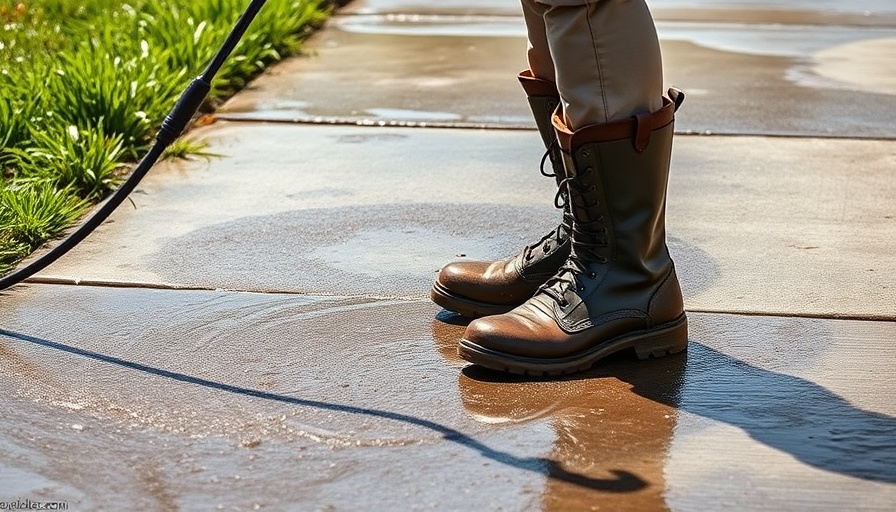
Unlocking the Power of Your Pressure Washer
Using a pressure washer can transform your home's exterior, making it sparkle and shine with minimal effort. As a beginner, the prospect of wielding a powerful tool for the first time might seem intimidating, but fear not! This guide will help you harness the cleaning might of your pressure washer and elevate your DIY skills.
Setting Up for Success: Safety First
Before diving into your cleaning project, it’s essential to understand how to safely set up your pressure washer. Safety goggles, gloves, and closed-toe shoes are must-haves to protect against splashing and flying debris. Start by checking the area you’ll be cleaning—removing any obstacles and ensuring pets and children are at a safe distance. It's wise to work on a dry day, as wet surfaces can lead to slips and accidents.
Nozzle Know-How: Choosing the Right Attachment
Pressure washers come with a variety of nozzles, each designed for specific tasks. The 0-degree nozzle is powerful and best for tough stains, while the 25-degree nozzle offers more general cleaning capabilities. An important tip is to begin with the widest angle and gradually work your way into tighter spots. This strategy not only minimizes the risk of damage but also saves time and effort.
Best Techniques for Cleaning Various Surfaces
Understanding the right techniques for different materials is vital for effective cleaning. For patios and sidewalks, using sweeping motions will help clear dirt without etching the surface. Wooden decks require a gentler approach—using a wider nozzle and keeping a safe distance to avoid damage. For siding, applying detergent first can loosen grime, making the rinsing process much easier.
What Your Pressure Washer Can Clean
From decks and driveways to garden furniture, the uses for your pressure washer are endless. Many homeowners find it invaluable for garden maintenance, especially after heavy storms. It’s also fantastic for renewing outdoor furniture's original colors. However, it’s crucial to note that not all items can withstand that powerful stream. Avoid using it on delicate surfaces like painted or varnished items without testing a small area first.
Real-Life Transformations: A Home Improvement Adventure
Every homeowner has their favorite cleaning stories. Many shared how their pressure washer turned a dull, dirty patio into a welcoming outdoor space perfect for parties. One reader recounted how they tackled a year’s worth of grime from their driveway, feeling accomplished and relieved by the instant results. Such recreational cleaning moments encourage others to look at pressure washing as a fun weekend project rather than a chore.
Risks and Challenges of Pressure Washing
While pressure washing is generally safe, it comes with its own set of risks. Over-pressurizing can lead to damage—not only to your home’s surfaces but also to the machine itself. Constantly practice caution, and service your equipment regularly to maintain its best performance. Knowledge of your machine and technique can save you from costly repairs.
Before You Blast Away: Essential Preparation Steps
Lastly, let’s review the preparation steps before turning on the machine. Always fill the detergent tank if necessary, and check that your hose is correctly attached and free of leaks. Test the spray on a hidden area to familiarize yourself with the power level. These meticulous preparations will enhance your cleaning experience and ensure optimal results!
In conclusion, mastering your pressure washer opens up a world of cleaning possibilities while simplifying your outdoor maintenance tasks. So, gather your protective gear, get your favourite tunes ready, and dive into the satisfying world of pressure washing—your home will thank you!
Ready to take your outdoor cleaning to the next level? Discover the best pressure washer options and techniques today to enhance your home maintenance skills!
 Add Row
Add Row  Add
Add 




Write A Comment